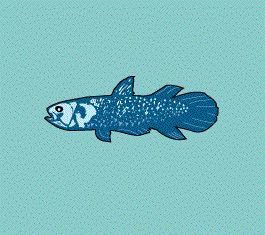Rates of evolution - What is stasis?

Stasis
Stasis is the situation in which evolutionary lineages persist for long periods without change. In the fossil record, stasis is common but it has recently taken on a new importance with the punctuated equilibrium debate.
Lineages which have experienced a long period of stasis are called living fossils: lungfish are the classic example.
The coelecanth, pictured opposite, is a famous living fossil: specimens caught off the coast of Africa are identical to fossilized forms over three hundred million years old.
The following animation illustrates the process of stasis in horseshoe crabs. As the animation will demonstrate, over the last two hundred million years very little morphological change has actually taken place and the modern crab (Limulus polyphemus ) closely resembles its ancient ancestors.
| Next |



